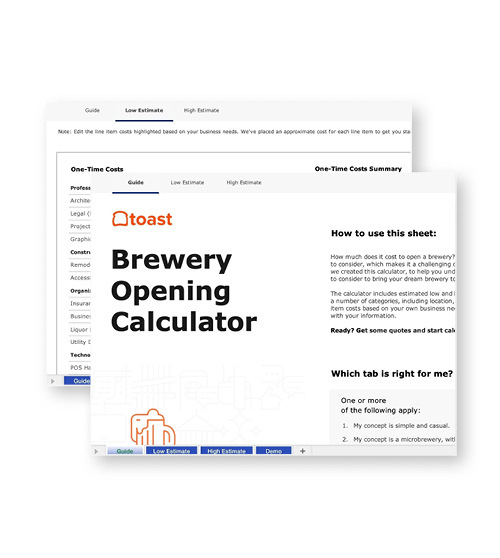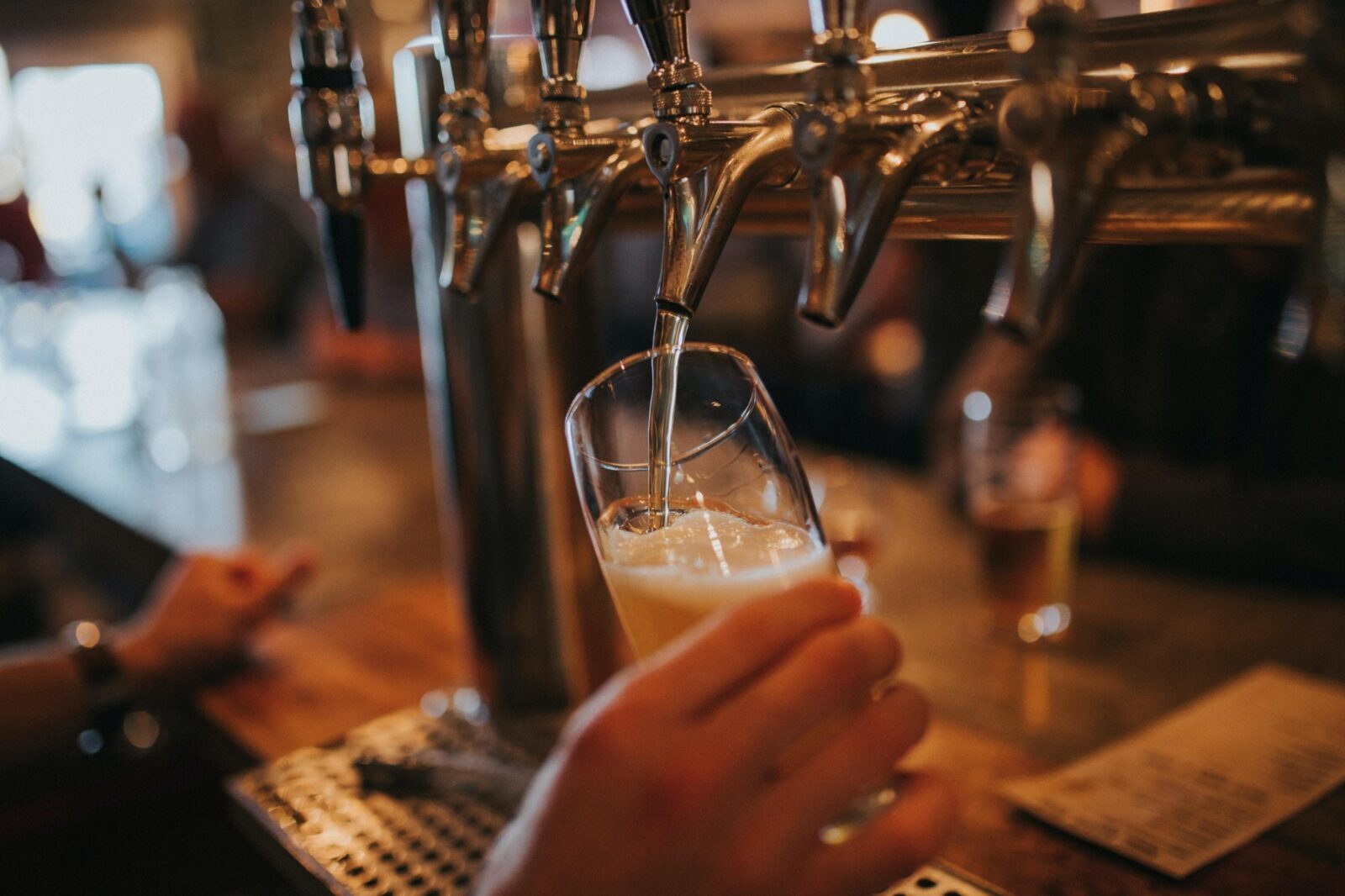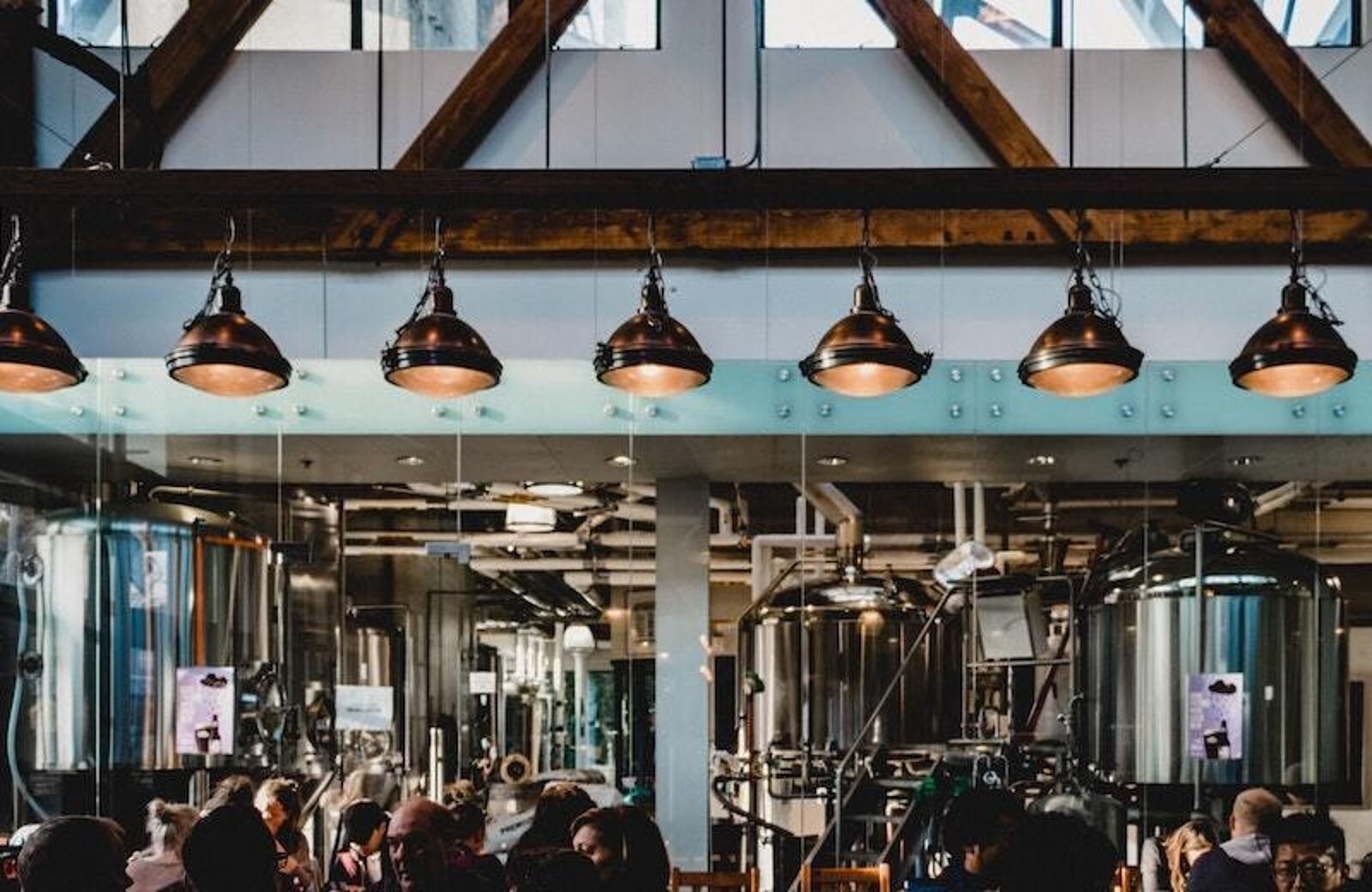
How Much Does it Cost to Open a Brewery? [Brewery Startup Costs]
Thinking of opening a brewery? Here’s how much it costs and the kinds of costs you’ll need to map out in your brewery business plan.

Katherine BoyarskyAuthor


Brewery Opening Calculator
This calculator lays out some of the fundamental financial costs of opening a brewery, so you can start planning and bring your dream brewery to life.
Get free downloadThe past decade was huge for the world of craft beer. Hobbyist home brewers had access to way more ingredients and equipment, and craft breweries, microbreweries, and brewpubs became enormously popular.
The brewery industry quickly gained momentum when craft beer was popularized in the early 2000’s. Since then, it’s continued to grow steadily with over 9,000 breweries in operation in the U.S. in 2023 (up from just 1,400 in 2006). Brewery-hopping and craft beer trading have become hobbies, attracting crowds of beer connoisseurs to breweries around the world to try exclusive batches.
As long as they keep making beer, people will continue flocking to breweries to share a drink with their friends and family. For budding brewmasters and industry lifers looking to strike out on their own, it’s always exciting to work towards opening your own brewery.
Here’s how much it costs to make your brewery dreams come true, along with the business planning tips you’ll need to attract a thirsty crowd.
Average Cost of Opening a Brewery
The cost of opening a brewery can also vary widely depending on the type of brewery, the location, the size of your brewery, the production capacity, and your staffing needs, in addition to the cost of the brewing equipment and ingredients you’ll need. Whether or not your brewery offers food service will also make an impact on your overall startup costs and operating costs.
On average, the cost to start a brewery is in the range of $500,000 to $1.5 million.
Even microbreweries or very small operations cost at least $250,000 to open.
For larger breweries with more varied craft beer offerings, startup costs can reach as high as $2 million.
Brewery Opening Cost by Square Foot
Due to the oversized nature of brewery equipment, from fermentation tanks to stacks of thousands of cans, you’ll need to find a substantial space to house your brewery — especially if you decide to open a taproom so customers can enjoy your brews on-site.
Whether you’re building from the ground up, converting a different type of restaurant or retail space into a brewery, or renting out a vacated pre-existing brewery, you can expect to pay between $10-30 per square foot.
As a final step, use theBrewery Opening Calculator to gain a more accurate estimate of all the costs you’ll encounter, with all the varying factors that your business will include.
Brewery Equipment Checklist
Opening or upgrading a brewery? Don't miss any essential equipment! Download our free, comprehensive Brewery Equipment Checklist.

Estimating Brewery Startup Costs
Before you begin calculating costs, take some time to map out your brewery business plan to ensure you’re allocating funds appropriately. Brewery costs vary depending on the specifics of your operation, but these are the averages you can expect.
A Breakdown of Brewery Startup Expenses
Use this list to help plan and manage your budget while opening your brewery, and how much working capital you’ll need.
Location, Utilities, and Insurance
Due to local government zoning regulations, you can’t open your brewery in just any available retail space. Most states have designated zones for the hospitality industry, and having alcohol involved (and brewing and production) can further complicate things. To ensure you aren’t wasting any time scouting in restricted areas, check with your local government and find out about zoning limits in your area. Or enlist a restaurant industry realtor who is already an expert on local regulations, zoning, permits, and available properties.
Once you’ve determined potential locations for your brewery, outline your space requirements. For example, opening a microbrewery requires a fraction of the space that opening a standard-sized brewery with a taproom does. Factor in all of the space you need to store and operate your equipment, as well as the space you need for your staff to comfortably work before making any final location decisions.
Decide if you’ll be renting or buying a space — this makes a major difference in how much you’ll need upfront — and find out what the average utilities bill for the previous tenant was like. Then, look into the options you have for insurance for the space.
Brewery Interior Design
What atmosphere do you want to cultivate at your brewery? Is it going to be a relaxed, chill place where people can go on laid-back dates or small group hangs? Or do you want to start a brewery with a taproom that doubles as the hottest new party spot in town? Will guests be able to take a tour of brewery operations, or will it be a more “behind the scenes” style brewing area?
The interior design and layout will dictate how people spend time there and the overall atmosphere that’s created. When designing the layout and floor plan of your brewery, ask yourself guiding questions such as:
Will you have a taproom?
If so, how many guests will you host at a time?
Is the brewery the only place where you will be brewing your beer?
Will your brewery double as an event space or venue?
How much space needs to be allocated for brewing equipment?
How much space needs to be allocated for customer seating?
Will you have table games like shuffleboard or ping pong?
Will you offer other perks like board games or cards?
Will you have arcade games or a photo booth?
Many breweries choose to include activities since they make for ideal event spaces. If you’ll be hosting weddings or other events, think about how to design a space that’s either on theme, or neutral enough to be decorated for each event.
Brewery Business Plan Template
Use this free template to easily create a great business plan that organizes your vision and helps you start, grow, or raise funding for your brewery.

Brewery Equipment and Inventory
Equipment is generally the biggest cost you’ll encounter when opening your brewery, brewhouse, or brewpub. You can’t start the brewing process without it — you’ll need to purchase (or finance) all the major equipment, plus small wares, before you can start brewing beer at scale.
Regardless of if you’re buying brewing equipment new or used, the typical equipment you’ll need to begin brewing your own beer includes:
A brewing system, including fermenters, boiling equipment, and brew kettles
Test strips, meters, stock pots, and portion scales
Walk-in refrigerators for keg storage
Bottling and packaging tools including growlers and beverage shippers
Keg tapping, dispensing, and serving equipment
Safety gear and equipment
Pro tip: buy your equipment with an eye on the future. If you’re opening a microbrewery now but plan to scale in coming years, don’t invest in pieces of equipment that your operation will quickly outgrow and need to replace. You may feel like you’re saving on equipment costs now, but buying equipment twice will be more expensive than just investing in the more expensive versions up-front.
You’ll also need to stock up on the ingredients that will go into your beer — in industrial quantities.
Marketing, Branding, and PR
Beer makers in the United States spend roughly $1.6 billion on advertising each year. And to top it all off, 93 cents of each dollar of that $1.6 billion is being spent by just the top five brewing companies.
With the brewery world growing increasingly more crowded with each passing year, new and emerging breweries need to prioritize branding and marketing strategies in order to stand out against competing beer halls.
Here are a few brewery marketing tips:
Develop a clear brand identity that’s unique and exciting — and use it on your cans and bottles, labeling them with the colors and logos that represent your brewery.
Create original branded merchandise like keychains, koozies, bumper stickers, tee shirts, and other swag
Run engaging social media marketing campaigns
Invest in marketing tactics such as paid digital ads, creating a website, and email marketing
Partner with local businesses
Brewery Exterior Design
One popular way that breweries save costs is by reserving their indoor space for beer production and designing an exterior taproom, tasting room, and seating area for customers to enjoy their drinks.
If you decide to offer outdoor seating and to take the design of your brewery outside, prepare to spend anywhere from $1,000 to $40,000 in exterior design costs.
Organizational and Development Costs
Opening a brewery requires you to obtain a collection of bar licenses and permits before opening day. They include:
A business license: $25 to $7,000
Employee identification number (EIN): free!
A liquor license - cost varies widely depending on location and size of brewery, and your production plans
Work with a professional with experience in breweries to guide you through the licensing process. It can be helpful to have some hand-holding from someone who's practiced in navigating the bureaucracy in your local area — they can help you avoid costly mistakes and delays.
Professional Services
Opening your own brewery is a lot of work. In addition to overseeing the brewing and packaging of your beer, you also need to market your brewery, apply for permits and licenses, hire staff, and ensure you’re constantly operating in accordance to local and state brewery regulations.
To help juggle all of those tasks at once, many brewery owners choose to outsource responsibilities to third-party restaurant industry experts such as accountants, lawyers, marketing professionals, and brewery consultants.
Costs will range depending on your specific needs, but new brewery owners can spend up to $50,000 in professional services during pre-opening.
Technology and Point of Sale
It’s official, tech has made its way into the brewery industry. Modern brewing tech tools have been designed with advanced computing and AI to revolutionize the way brewers produce and package their creations. For example, canning was once a time-consuming seven step process — now, it’s completely automated.
Brewery point of sale systems that streamline taproom operations have also emerged, and can help brewery owners keep track of everything from their inventory to their profit margin.
Toast’s POS system is designed to improve the brewery operations experience for staff and guests, while integrating with your other restaurant tools.
Bar and Lounge POS Comparison Tool
A free, customizable Bar and Lounge POS Comparison Tool to research and compare point of sale systems in one Excel spreadsheet or editable PDF.

Brewery Food Costs + Partnerships
You may decide to offer a brewery food menu alongside your beer selections, or partner with local restaurants or food trucks to offer dining options. While many patrons don’t head over to breweries expecting a full dining room menu, offering a selection of snacks, appetizers, and shareable treats is a great way to set your brewery apart.
Just remember that if you do decide to offer a menu, you’ll need to buy a food service license (costs range from $100 to $1,000 or more).
Staffing and Management
Last but not least, you’ll need to allocate a fair share of your brewery startup costs to hiring staff and a management team. Breweries are specialized establishments, meaning that in addition to hiring bar and waitstaff for your tap room, you’ll also be hiring a roster of brewing professionals, including:
Packaging and cellarmen
Brewers
A quality assurance/quality control team
Head brewer/brewmaster
On average, you can expect to spend 30% of total revenue on restaurant labor costs.
How to Fund your Brewery Startup Dreams: Capital and Loans
The restaurant startup capital needed to open a brewery includes enough money to cover your opening costs, at least six months of operating costs, and emergency funds. Seeing as the cost to start a brewery is so high, you’ll likely need to find outside funding for your brewery small business.
There are a lot of options available, including small business loans, personal loans, bank loans, merchant cash advances, crowdfunding, and many more — learn more about the financing options available to burgeoning brewmasters with The Complete Guide to Restaurant Financing and Loans.
Time to get brewing!
As long as there’s water, malt, hops, and yeast in this world, people will find a way to turn them into different types of beer. But starting a brewery takes much more than the right ingredients and equipment. It takes the passion of a brewmaster and to continue producing high quality ales, stouts, lagers, and pilsners — and the business knowledge of an entrepreneur to make sure you can keep customers coming, week after week.
To find out if you have what it takes to break into the ever expanding world of craft beer, create a comprehensive brewery business plan for yourself and map out how you’ll make the most of your startup budget.
Related Brewery Resources
Brewery Opening Calculator
This calculator lays out some of the fundamental financial costs of opening a brewery, so you can start planning and bring your dream brewery to life.

Is this article helpful?
DISCLAIMER: This information is provided for general informational purposes only, and publication does not constitute an endorsement. Toast does not warrant the accuracy or completeness of any information, text, graphics, links, or other items contained within this content. Toast does not guarantee you will achieve any specific results if you follow any advice herein. It may be advisable for you to consult with a professional such as a lawyer, accountant, or business advisor for advice specific to your situation.
Read More
Subscribe to On the Line
Sign up to get industry intel, advice, tools, and honest takes from real people tackling their restaurants’ greatest challenges.



